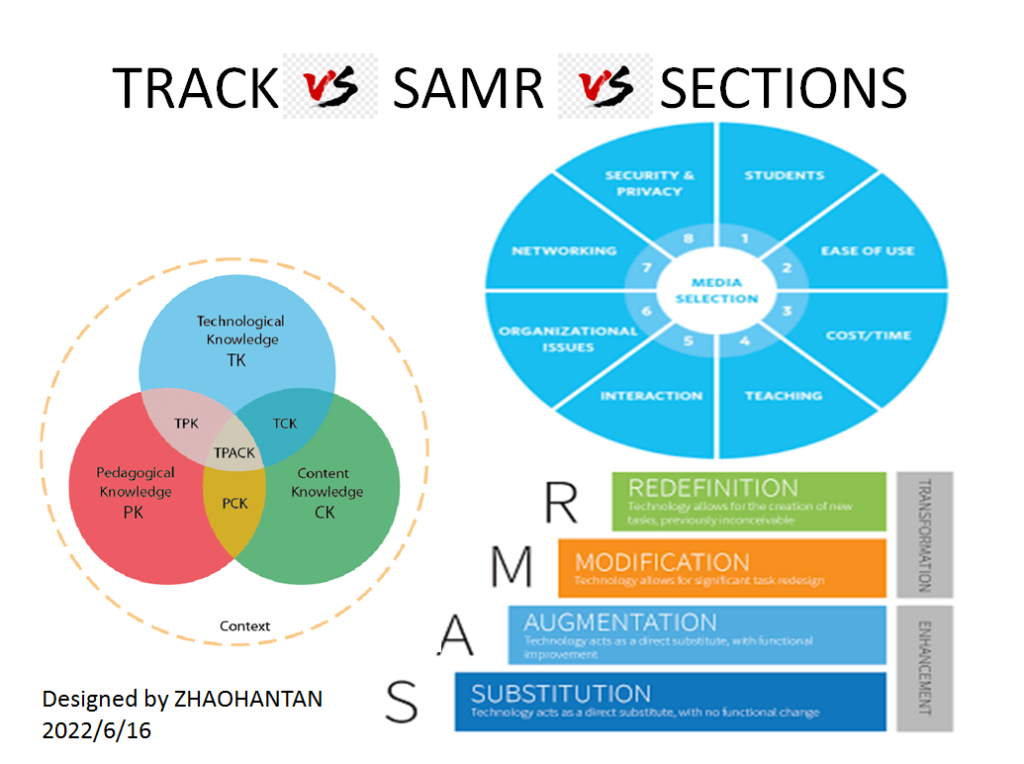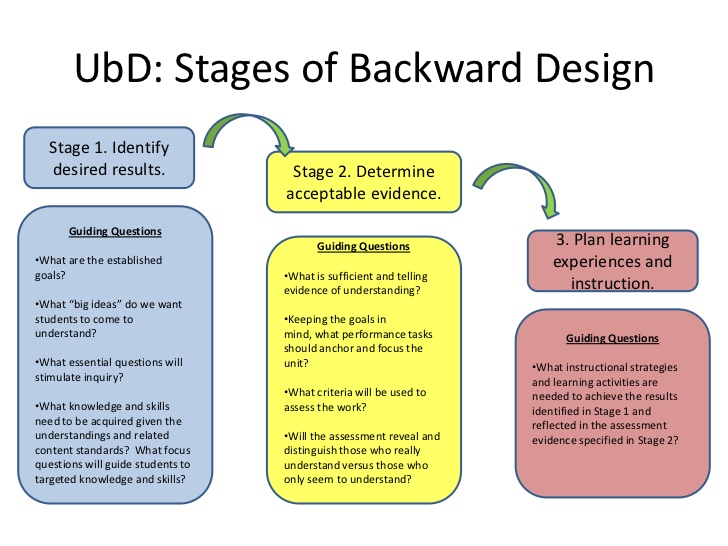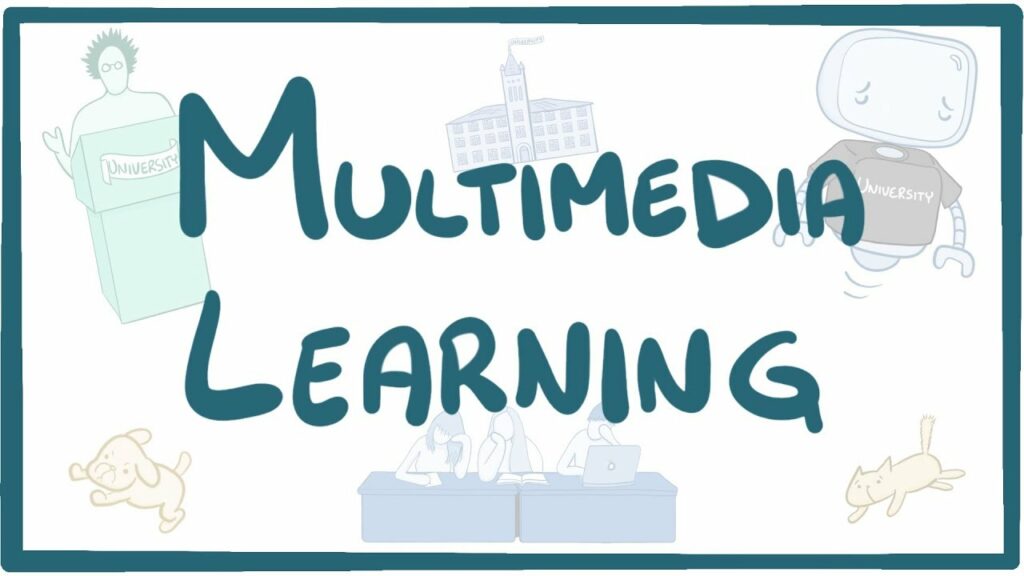
In this week, we mainly learn about some effective theories to evaluate multimedia and multimedia tools. Sometimes, teachers need to combine with several theories to determine if a specific multimedia is the most cost-effect. Here in this blog, I mainly compare with TRACK, SAMR and SECTIONS and tell their differences.
TRACK model refers to technological, pedagogical and content, knowledge. It emphasizes on students’ understanding of knowledge and describes some effective pedagogical practice in technology-enhanced learning environments. This model is more likely related to formal K-12 classrooms.
SAMR, substitution, augmentation, modification, redefinition, is a technological model to see how technology might impact teaching and learning (Hamilton et.a. ,2016). In the substitution level, teachers merely replace the traditional materials with digital versions. In the augmentation level, teachers keep the contents unchanged but enhance the lesson through asking students to take part in the multimedia presentation. In the modification level, teachers can use a learning management system, such as Moodle or Zoom, to teach or communicate with students who have traditionally been marginalized. In the redefinition level, teachers tend to enable activities that were previously impossible in the traditional class.
SECTIONS refers to students, ease of use, costs, teaching functions, interaction, organizational issues, networking, and security and privacy. It is a rather comprehensive teaching system includes the technology and educational environment. Teachers would access the technology about its advantages or disadvantages before class. After accessing the technology, teachers would implement it to make the class most effective for students.
Generally speaking, all of the three models enable teachers to identify suitable technological ways to evaluate multimedia. TRACK model lays more emphasis on teaching knowledge with appropriate technological and pedagogical methods; SAMR focus more on different multimedia tools and provide a high-level view of technology integration in teaching; while SECTIONS is more like a checklist for teachers to access and implement the technology they used in the class.
References
Hamilton, E.R., Rosenberg, J.M. & Akcaoglu, M. The Substitution Augmentation Modification Redefinition (SAMR) Model: a Critical Review and Suggestions for its Use. TechTrends 60, 433–441 (2016). https://doi.org/10.1007/s11528-016-0091-y






Recent Comments